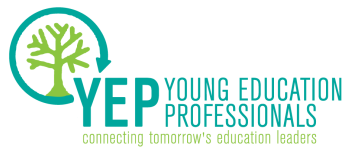
Elizabeth and her family lacked a stable living environment. Since migrating from Haiti when Elizabeth was five, they’d been in and out of homeless shelters and transitional housing. During some key early education periods, Elizabeth and her family were focused on where they would sleep at night, not what bedtime story to read.
Elizabeth’s unstable home environment has had long-term detrimental effects on her academic achievement. And she is not alone. Elizabeth is just one of nearly 1.2 million children in the U.S. education system without a place to call home.
The learning gap for low-income children is not just a problem with the American education system.
It is also a housing issue.
Homelessness, frequent moves and other housing issues, like noise and chaos, can significantly hinder a child’s education. Researchers have repeatedly documented this, showing that children who have stable living environments have less stress, a heightened sense of community and generally achieve greater academic success. The National Housing Conference’s research division, the Center for Housing Policy, has published several reports on the topic. Simply put, access to safe, decent and affordable housing plays a major role in lowering the achievement gap that so often plagues low-to moderate-income families.
Here’s a summary of the cause and effect:
Unaffordable housing leads to family stress. Family stress leads to educational inequity.
And here’s a breakdown:
When housing isn’t affordable, it hinders a child’s ability to learn because families are dealing with a higher magnitude of stressors including food insecurity, crowding and neighborhood noise. Low-income families have fewer housing options already, so this reality, combined with the increasingly higher costs of living, leads to an inability to settle someplace affordable. This results in a lack of success in the classroom. Parents pass the aforementioned stressors to their children, which leads to brain-harming toxic stress levels. Long-term exposure to poverty and trauma leads to reduced working memory, impulse control and task persistence, and this leads to poor educational outcomes. In brief, the sense of instability that comes with low-income families’ inability to afford housing creates a repeated negative cycle of educational disadvantage.
But achieving real change in practice is harder. Last summer, Housing Virginia, a statewide partnership of public and private organizations, hosted a symposium where housers—people who promote safe and affordable housing—and educators came together to acknowledge the link between education and housing. They’ve since developed a blog to link housing and education advocates together in efforts to forge a better understanding of how the two fields intersect. It features commentary from housers and educators on effective ways to create more affordable housing options, strengthen schools and create a positive cycle for children.
What does the impact of housing instability look like in the schools where you live? Have you ever known a child in a situation similar to Elizabeth’s? Share your ideas on how educators and housers can continue to work together to bring change. Understanding how these two very different worlds intersect will allow housers and educators alike to continue to advocate for equity on all fronts.
Radiah Shabazz works in marketing and communications at the National Housing Conference. You can reach her via email or Twitter.

 RSS Feed
RSS Feed